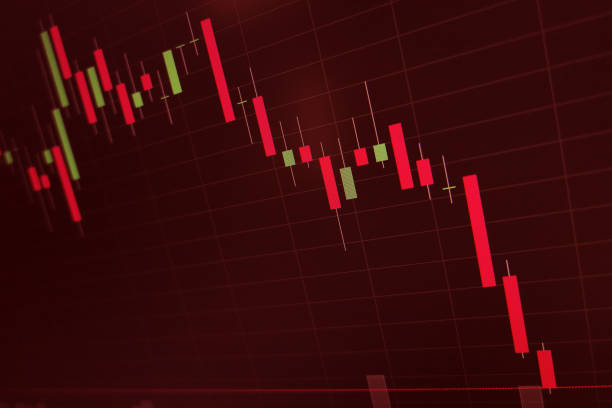The current generation seems to be dominated by alienated techies and the all-for-one ethos in crypto market was the largest attraction. Currently, panic seems to be spreading across this world and the same ethos is posing what might be the largest threat yet to its survival.
What kicked off this year in the crypto market as a ‘risk-off’ bout of selling pushed by a United States Federal Reserve abruptly striving to rein in excesses has opened the ‘Pandora’s box.’ The Fed’s move seems to have exposed a web that appears to resemble the tangle of derivatives that brought the global financial system down to its knees in 2008.
As Bitcoin lost nearly 70% of its record highs, an assortment of altcoins also plunged violently. Furthermore, the collapse of the Terra ecosystem, a hyped test in DeFi, started with its algorithmic stablecoin de-pegging from the US dollar and it ended with a steep drop that eventually rendered $40 billion of tokens worthless.
Related: BUCKLE UP!- Why Did Terra LUNA And UST Crash So Steeply?
Crypto collateral that appeared valuable enough to support all kinds of loans one day became heavily discounted and in some cases illiquid, making several previously invincible hedge funds and high-profile lenders vulnerable.
What Is Causing The Crypto Market Meltdown?
The propellants of the meltdown, overuse of leverage, greed, and a dogmatic belief in ‘numbers go up’, are not new in the markets. They have appeared previously just about when every other market bubble was about to pop.
In the crypto market, however, and mainly in the current scenario, these factors have come in a budding and still majorly unregulated sector simultaneously. In the digital assets markets, boundaries are blurred and failsafe weakened by a strong conviction that every participant could get rich together.
Cryptos have already experienced major drops previously dubbed crypto market winters, which is a bear market to the rest of the finance world. However, the market’s growth and increased adoption from Main Street to Wall Street means that a lot is at stake this time around.
Celebrities selling crypto that plunged a few days later is one thing, but Fidelity’s plans to include Bitcoin in 401(k)s may affect a whole generation. Its explosive growth has made the current turbulence much stronger: after crypto’s last 2-year hibernation ended in 2020, the industry surged to about $3 trillion in total assets in November 2021, before crumbling to less than $1 trillion.
Jason Urban, co-head of trading at Galaxy Digital Holdings, stated:
“It’s got a different flavour this time.”
Galaxy is the $2 billion digital asset brokerage launched by billionaire Mike Novogratz, which benefited hugely from cryptos’ surge. However, it was also one of the sector’s most prominent investors and supporters of the Terra experiment.
Operators ‘Throw In The Towel’
If Terra was this year’s crypto winter’s Bear Stearns, most people fear that the Lehman Brothers moment is just around the corner. In the 2008 financial crisis, the inability of lenders to meet margin calls was an early warning of what followed.
Crypto market spaces seem to have had their equivalent in June when Babel Finance, Celsius Network, and Three Arrows Capital (3AC) all confirmed massive troubles as digital asset prices dropped, triggering a huge liquidity crunch that arises from the sector’s interdependence.
Lex Sokolin, global FinTech co-head at ConsenSys, stated:
“In 2022, the downturn looks far more like a traditional financial deleveraging. All the words that people use, like ‘a run on the bank’ or ‘insolvent’, are the same that you would apply to a functioning but overheated traditional financial sector.
Consumer confidence and perception of bad actors played a role in both cases, but what is happening now is about money moving out of deployed, functional systems due to over-leverage and poor risk-taking.”
Related: Is the Whole Crypto Market Being Held Together by Sam Bankman-Fried and Alameda Research?
During bullish markets, leverage is a means for the investors to make huge profits using less cash. However, when the markets tank, these positions rapidly unwind. In this case, since it is cryptos, these bets normally involve multiple assets making contagion across the wider market highly likely to happen.
Crypto loans, mainly those offered in decentralized finance (DeFi) apps that dispense with various intermediaries like banks, mostly need borrowers to provide more collateral than the worth of the loan, considering the risk associated with accepting these kinds of assets.
But when market prices plummet, loans that were previously over-collateralized become abruptly at risk of liquidation. This process takes place automatically in decentralized finance and has been intensified by the increase in the number of traders and bots that are hunting for ways to make a quick profit.
The surge in crypto markets in 2021 was probably underpinned by leveraged speculation, maybe more so than in the past crypto winter, according to one finance professor at the University of Texas at Austin, John Griffin. A space dominated by rock-bottom rates and ultra-accommodative monetary policy seems to have set the stage.
Griffin stated:
“With interest rates rising, as well as lack of trust in leveraged platforms, this deleveraging cycle has the effect of unwinding these prices much more rapidly than they rose.”
The Contagion
While traditional markets mostly rely on a gradual and steady amount of leverage to grow, that effect is somehow amplified in cryptos due to the way speculation concentrates in the industry. Regulators are closely monitoring the budding industry, looking for any signs of instability that may threaten their plans to combat cryptos.
Even the rules that were announced in spring have now changed after Terra’s collapse, with some of the jurisdictions seemingly creating rules and regulations meant to ease the systemic effect of failed stablecoin systems.
Any more crypto failures might eventually pave the way for strict rules, making a market rebound highly unlikely in the near term. On June 28, Bitcoin dropped with the rest of the crypto industry, losing around 2.02% to trade around $20,760. It has since then dropped back below $20,000 as of June 30. The biggest crypto is down about 36% in June alone.
Related: Bitcoin Declines as Altcoin Gains Dominance
Mr. Griffin added:
“There may be some bear rallies, but I don’t see a catalyst to reverse the cycle anytime soon. When the NASDAQ bubble burst, our research found that the smart investors got out first and sold as prices went down, whereas individuals bought down and continually lost money. I hope history doesn’t repeat itself, but it often does.”
With a capital of about $900 billion, the crypto industry is barely above the nearly $830 billion mark it reached in early 2018 before the last winter came in, causing a downdraft that pushed the market to lows of $100 billion, based on CoinMarketCap data.
Interest rates are rising and there is a lack of trust in leveraged platforms giving the current deleveraging cycle the effect of losing the prices more rapidly than they surged. Previously, digital assets were the arena of dedicated retail investors and a few crypto-focused funds. However, that is not the case anymore with Wall Street and Main Street coming in.
The coming in of “mom and pop” investors and major hedge funds have made regulators mostly intervene with stern warnings to consumers of the risks that come with trading such assets. There was one infamous advert on London’s transport network in late 2020 that read:
“If you’re seeing Bitcoin on a bus, it’s time to buy.”
That advert has since been banned.
Unlike crypto’s early supporters, mass adoption means that a majority of the current investors consider crypto as just another asset class and they similarly treat them as the rest of the investments in their portfolio. This development makes crypto prices more correlated to everything else, just like the technology stocks.
Sadly, that does not make most crypto bets any simpler to comprehend.
The financial world is receiving a severe beating in 2022. Nonetheless, the recent crypto market crash was mainly amplified by its speculative and experimental nature, wiping out most of the small-town traders who injected their life savings into untested projects like Terra with no recourse.
Notably, the industry’s hype machine is louder than ever, using tools like Reddit and Twitter that have been fortified by new generations of crypto acolytes. Exchanges have also played their role, with Binance, FTX, and Crypto.com all spending huge on marketing and high-profile sponsorships.
The huge risk level shows why the crypto market is not for everybody, according to the managing director at crypto fund manager 21Shares, Sina Meier. While speaking in a panel discussion in June at a Future of Finance conference in Zurich, she stated:
“Some people should stay away. Many retail investors “are lost, they just follow what they read in the newspapers. That’s a mistake.”
Before the most recent crypto winter, most startups used initial coin offerings (ICOs) to raise capital through the issuance of their tokens to investors. They suffered extensively when coin prices crashed since they had kept most value in the same pool of assets and Ether. Everything got worse when regulators decided to crack down on ICOs saying that they were similar to offering unregistered securities to the investors.
Venture Capitalists Still Hopeful
This time around, the funding landscape is majorly different. Most of the startups that came out the last winter like Dapper Labs NFT and gaming platform, have gone for venture capital funding as a preferred strategy to raise cash.
Huge firms like Andreessen Horowitz and Sequoia Capital cumulatively invested about $43 billion into the industry since late 2020 when the last bull market started, according to PitchBook data.
Hence, instead of wholly relying on crypto wealth, some of the major players have lots of reserves of hard currency stored to enable them to get through the turmoil as they work on developing new blockchains and creating decentralized media platforms.
On the flip side, the recent end of the Bull Run means that they have been spending the cash quicker than it has been coming in.
In June 2022, Crypto.com, BlockFi, Coinbase Global, and Gemini Trust are some of the major crypto firms that have announced layoffs, citing the macroeconomic downturn for derailing their previously ever-expanding plans.
Coinbase had hired around 1,200 people this year alone. But, it is now laying off almost the same number in an 18% cut to its workforce. Nonetheless, due to the heights the crypto market reached in the last bull market, there is a huge amount of funding set aside for the industry in Silicon Valley’s coffers compared to the past seasons.
Andreessen alum Katie Haun unveiled her $1.5 billion crypto fund in March 2022, while Coinbase co-founder Matt Huang set up a $2.5 billion vehicle in November 2021. While venture capitalists might be cautious now about where they invest their money, it will still have to be spent somewhere.
Alston Zecha, a partner at Eight Roads, commented:
“None of these companies become mature for many years. We’ve been spoiled over the last couple of years of seeing businesses get these amazing up-rounds after six or nine months. As the tide goes out, there’s going to be a lot of people who are found to be naked.”


:quality(70)/cloudfront-eu-central-1.images.arcpublishing.com/thenational/YI47U6DIRVETLANAGKSPVR5F3E.jpg)





